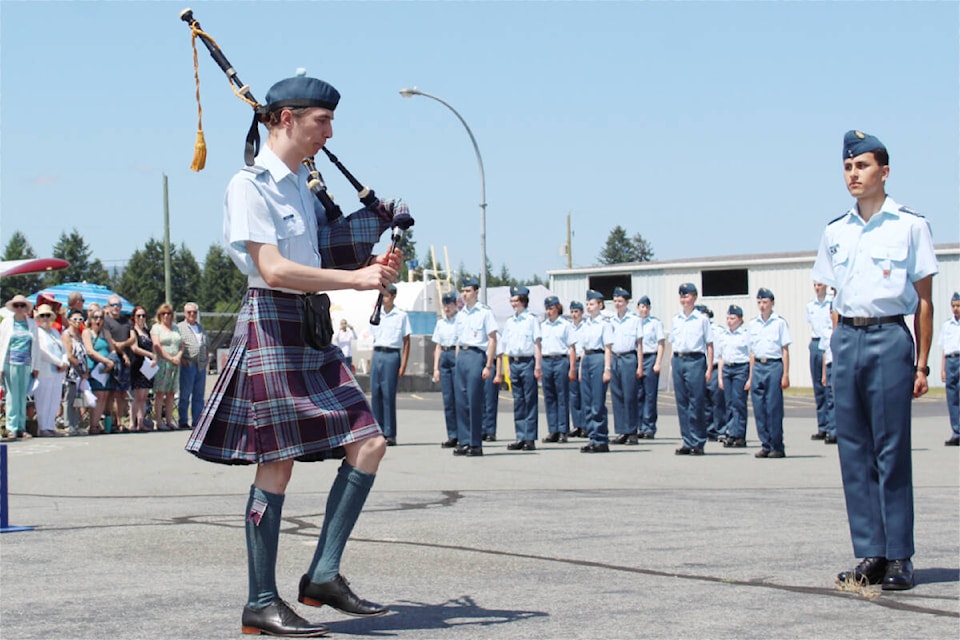The Royal Canadian Air Force is celebrating its 100th anniversary, and air cadets with the 205 Collishaw Royal Canadian Air Force Air Cadets squadron and 808 Thunderbird Wing Nanaimo are marking the occasion with an open house.
The event happens at 808 Thunderbird Wing’s lounge at 719 Nanaimo Lakes Rd. on Saturday, April 13, from 1-4 p.m.
“We have guest speakers coming, a slide show presentation from one of the VIU students … I believe it’s pictures from the past and information about the RCAF,” said Alana Wollan, 808 Wing communications director.
There will be appetizers, a no-host bar, 50/50 draws, prizes and mingling.
Guest speakers will include Sheila Malcolmson, Nanaimo MLA and minister of social development and poverty reduction, and 97-year-old Oz Septav, an original 205 Collishaw air cadet from 1942, the year the squadron was formed.
“We’re hoping to see previous 205 Collishaw air cadets and retired RCAF and present RCAF members come as well,” Wollen said.
The Royal Canadian Air Force observed its centennial April 1, marking 100 years since it was formed as a full-time permanent force with three components that, according to the RCAF official website, included a regular force, an air reserve and a reserve of non-active personnel.
The air force’s origins go back to 1909 when the Silver Dart, a bi-wing powered aircraft was flown to demonstrate the potential of aircraft to support militia units. Canada’s first military aircraft, a Burgess-Dunne floatplane, was purchased for the RCAF’s predecessor organization, the Canadian Aviation Corps, in September 1914, and, according to the RCAF, was intended for service in Europe, but upon arriving in the U.K. it was discovered the aircraft was damaged and was abandoned on Salisbury Plain where the Canadian Expeditionary Force was training for its deployment to France.
The RCAF’s birthplace is recognized as Camp Borden – now Canadian Forces Base Borden – in Ontario during the First World War in January 1917 when a group of Royal Flying Corps officers created the Royal Flying Corps Canada and first air station, where thousands of air and ground personnel were trained for overseas service, noted a Canadian government website.
The RCAF’s first combat action came in August 1940, when RCAF No. 1 Squadron engaged the German Luftwaffe during the Battle of Britain and downed three German aircraft and damaged four others.
To learn more about the RCAF’s history, visit www.canada.ca/en/air-force/corporate/reports-publications/on-windswept-heights-2.html.
For information on the RCAF’s centennial and events, visit http://rcaf2024arc.ca.
READ ALSO: Nanaimo’s air cadets well-reviewed at ceremony at the airport
